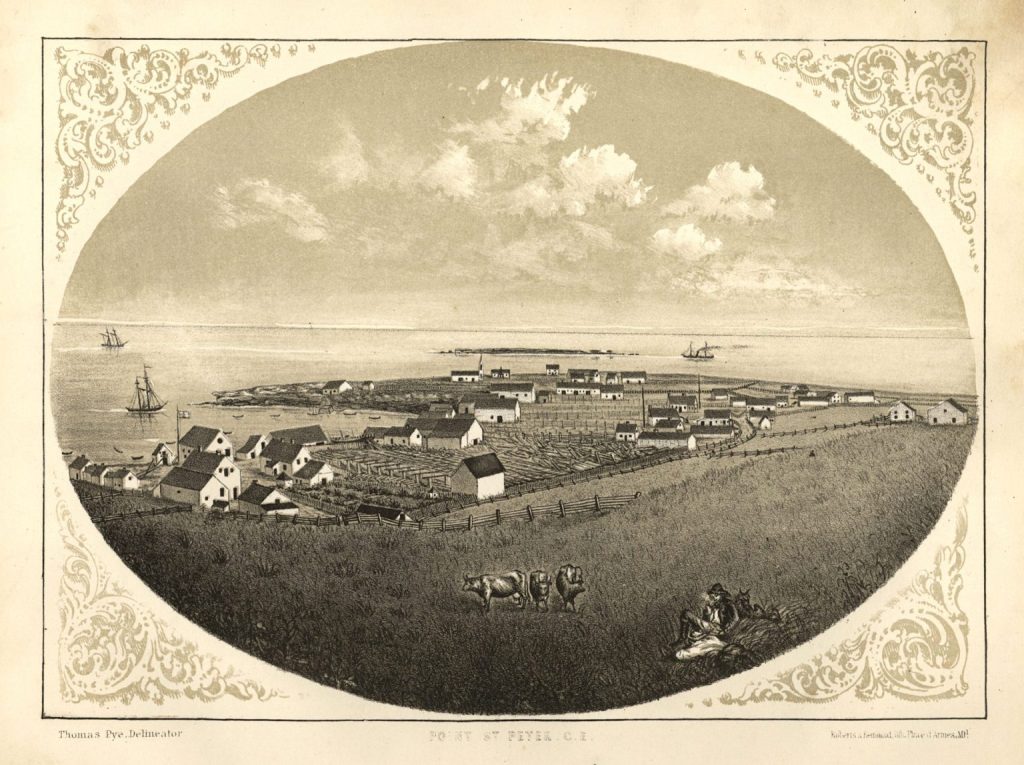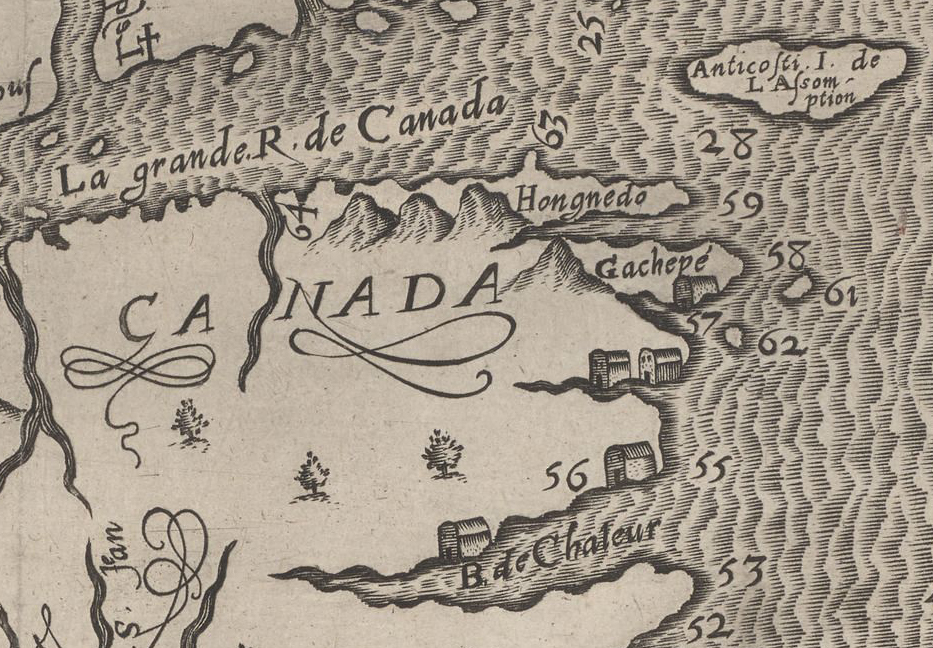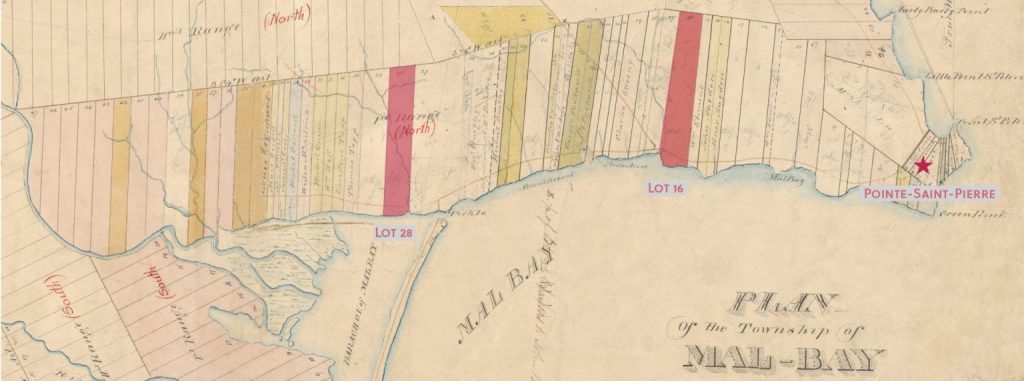
Marie Boudot (1715-1805)
Marie Boudot (parfois dite Boudeau) est née il y a plus de trois siècles, en 1715. Des milliers de personnes ayant vécu ou vivant en Gaspésie et dans toute l’Amérique du Nord descendent de sa lignée.
Janet Harvey
Présidente, Comité de développement de Barachois et les environs, descendante de Marie Boudot, et résidente de Belle-Anse
Selon la publication Évidences de communautés métisses autour de la baie des Chaleurs, Marie est la fille de Jean Boudot et d’une femme mi’gmaque ou métisse inconnue. Les faits documentés sur la vie de Marie et de son époux Jean Chicoine sont peu nombreux. Dans cet article, je tenterai de combler les vides entre les faits connus par des hypothèses fondées sur l’histoire de l’époque, afin de donner un aperçu de ce que Marie aurait vécu au cours de ses longues 90 années de vie.
Nous savons que Marie et Jean ont une première fille nommée Louise, née en 1744, ainsi que d’autres enfants. Marie a également une sœur, elle aussi nommée Louise, née vers 1720, qui épouse Aubin LeCoufle et s’installe à Cascapédia. Dans le Journal des évènements de la colonie, on indique que Jean Chicoine, à Pointe-Saint-Pierre, est témoin de l’arrivée de navires britanniques dans la baie de Gaspé en 1746. Les registres révèlent que Marie et sa sœur sont inscrites au recensement de 1761 par Pierre du Calvet en tant que veuves résidant à Barachois avec leurs enfants, et que Marie décède en 1805 et est enterrée à Pointe-Saint-Pierre.


Un héritage mi’gmaq
C’est un fait reconnu que les Mi’gmaqs vivent à l’extrémité de la péninsule gaspésienne depuis des milliers d’années. La carte de Marc Lescarbot de 1609 montre un camp mi’gmaq sur la rive nord de la baie de Malbaie, dans la région située entre Pointe-Saint-Pierre et Barachois. En 1675, le prêtre récollet père Hugolin décrit un établissement mi’gmaq près de la localité de Petite-Rivière (aujourd’hui Barachois), où Pierre Denys de La Ronde fonde, en 1672, le premier établissement français permanent de la péninsule gaspésienne. En 1690, 25 ans avant la naissance de Marie, les Britanniques rasent les installations érigées par de La Ronde, ne laissant derrière eux que des terres défrichées. Cependant, les Mi’gmaqs sont sûrement restés dans la région après le passage des Britanniques. Comme il ne fait aucun doute que Marie est elle-même métisse, il est très possible qu’elle soit une descendante des familles mi’gmaques de cette région.
À l’époque, les allochtones résident généralement dans une maison en rondins aussi appelée maison simple alors que les Mi’gmaqs s’installent dans des wigwam ou tipis, installés le long de la côte en été pour la pêche, et déplacés vers les bois pour la chasse en hiver. Bien que nous ignorions quels savoirs leur a été transmis, il est possible que certaines traditions et habiletés mi’gmaques aient été enseignées aux deux sœurs, Louise et Marie, par leur mère.
Un mariage mixte
Marie Boudot rencontre et épouse Jean Chicoine quelque temps avant 1744, date de naissance de leur fille Louise. Des indices laissent croire que Jean est un marchand à Barachois et qu’il possède une maison et un magasin. Les terres au centre de Barachois ayant été défrichées par les premiers colons français qui y ont vécu de 1672 à 1690 (établissement de Petite-Rivière), il aurait été facile de s’y établir.
En juillet 1758, Marie et Jean ont sans doute appris que les Britanniques se sont emparés de Louisbourg. En septembre, lorsqu’ils voient les navires de Wolfe à l’horizon de la baie de Gaspé, Marie et Jean se retirent probablement avec leurs enfants dans les bois. Depuis les collines surplombant la baie, ils auraient vu la fumée s’élever de l’incendie de leur maison et de leur magasin et se seraient rendu compte qu’un hiver rigoureux les attendait avec huit enfants à nourrir.
Quelque temps après la destruction des établissements par Wolfe, la sœur de Marie, Louise, et ses jumeaux nouveau-nés, viennent à Barachois en provenance de Cascapédia. Lors du recensement de 1761, Marie est inscrite comme veuve de « Jean Sicoin » avec neuf enfants, et sa sœur Louise, également comme veuve d’Aubin LeCoufle, avec sept enfants. Les deux sœurs et leurs 16 enfants, âgés de 0 à 18 ans vivent vraisemblablement ensemble.
Nous ne savons pas ce qu’il est advenu des maris Jean Chicoine et Aubin LeCoufle pendant la guerre avec les Britanniques, mais nous savons que Jean est encore en vie à Barachois en 1760, l’année suivant la prise de Québec, puisque son fils Jean-Baptiste est né en 1761. Les actes de décès de Jean Chicoine ou d’Aubin LeCoufle n’ont pas encore été retrouvés.
Une nombreuse descendance
Après la fin de la guerre en 1763, des anglophones s’installent dans la région et reçoivent des terres du gouvernement. À cette époque, la vie doit être bien difficile pour Marie, mère monoparentale de neuf enfants. Son fils aîné Aubin, âgé de 14 ans, doit assumer de nombreuses fonctions de « chef de famille ». Au fil des ans, cinq de ses neuf enfants meurent; les quatre survivants fondent leur propre famille.
La fille aînée de Marie, Louise, épouse Jean Jacques Bond en 1763 à Pointe-Saint-Pierre, à l’âge de 19 ans. L’année suivante, Marie devient grand-mère à 49 ans, lorsque son premier petit-fils, Louis, naît. À cette époque, Marie s’occupe encore de certains de ses enfants, le plus jeune, Jean-Baptiste, étant âgé de trois ans. Louise et Jean Bond ont dix enfants. Leurs descendants vivent encore aujourd’hui à Pointe-Saint-Pierre.
En 1770, Catherine, une des filles de Marie, se marie au très jeune âge de 15 ans avec James (John) Henley. Leur premier enfant, Louise, naît en 1772, et ils auront au total trois garçons et cinq filles. James meurt en 1791, alors que leur dernier-né a moins d’un an. Cette année-là, Catherine demande un titre de propriété pour 50 acres de terres à Pointe Verte (Pointe-Saint-Pierre). Catherine décède en 1814, à l’âge de 59 ans.
Le fils aîné de Marie, Aubin, épouse une métisse, Marie-Anne David, en 1771, et ils ont leur premier enfant, Michel-Antoine, en 1772. Aubin Chicoine et sa famille s’installent sur une propriété connue plus tard sous le nom de lot 28, à l’ouest de Big Brook (aujourd’hui appelé ruisseau du Prêtre) à Barachois. Aubin et Marie-Anne ont trois garçons et six filles. Leur fille Marguerite épouse William de Sainte-Croix, des îles Anglo-Normandes, en 1803. Une autre de leurs filles, Angélique, épouse en secondes noces John Tapp en 1805. Leurs fils prennent le nom de Chicoine-dit-Cotton, et, plus tard ne conservent que le nom de Cotton. Une partie du lot 28 appartient toujours aujourd’hui aux familles Cotton et Sainte-Croix.
En 1791, alors que Marie est âgée de 75 ans, son plus jeune fils, Jean-Baptiste, épouse Véronique Quemeneur (dite Laflamme) à Barachois. Ils ont six garçons et sept filles. Jean-Baptiste est le premier propriétaire enregistré du lot 16, situé à Belle-Anse, où se trouve un mouillage protégé pour les bateaux de pêche, où il vit jusqu’à l’âge de 73 ans, s’éteignant en 1834. Leurs descendants possèdent et habitent encore aujourd’hui des parties du lot 16.
Aujourd’hui, Pointe-Saint-Pierre est un lieu paisible où il ne reste que quelques maisons, mais à l’époque, Marie est témoin de la croissance d’une communauté effervescente où des immigrants·es de Jersey et de Guernesey ainsi que des Loyalistes ayant reçu des terres en échange de services rendus à la couronne britannique fondent diverses entreprises, notamment de pêche et de construction navale.
De Grande-Vallée à Maria, les noms Chicoine, Cotton, Sainte-Croix, Bond, Tapp et Henley figurent encore aujourd’hui dans l’annuaire téléphonique. Les descendants·es de Marie Boudot et de Jean Chicoine se sont aussi répandus dans toute l’Amérique du Nord, de la Colombie-Britannique à la Nouvelle-Écosse, et de Californie jusqu’en Alaska.

Photos (dans l’ordre)
Thomas Pye, Pointe-Saint-Pierre, gravure, 1864.
Musée de la Gaspésie
Marc Lescarbot, extrait de la Figure de la Terre Neuve Grande Rivière de Canada et côtes de l’océan en la Nouvelle France, 1609. Sous la pointe de « Gachepé » à droite, on aperçoit un camp mi’gmaq.
ANQ. 97952
Frederick William Blaiklock, extrait du Plan of the township Mal Bay showing the granted and unconceded lands in front range, 1858. Vers la fin du 18e siècle, Aubin Chicoine et sa famille s’installent sur une propriété connue plus tard sous le nom de lot 28 à Barachois alors que Jean-Baptiste Chicoine fait de même sur le lot 16 situé à Belle-Anse. Leurs descendants sont toujours propriétaires des lots respectifs.
ANQ Québec. E21,SSS5,SS1,SSS1,PM,4B